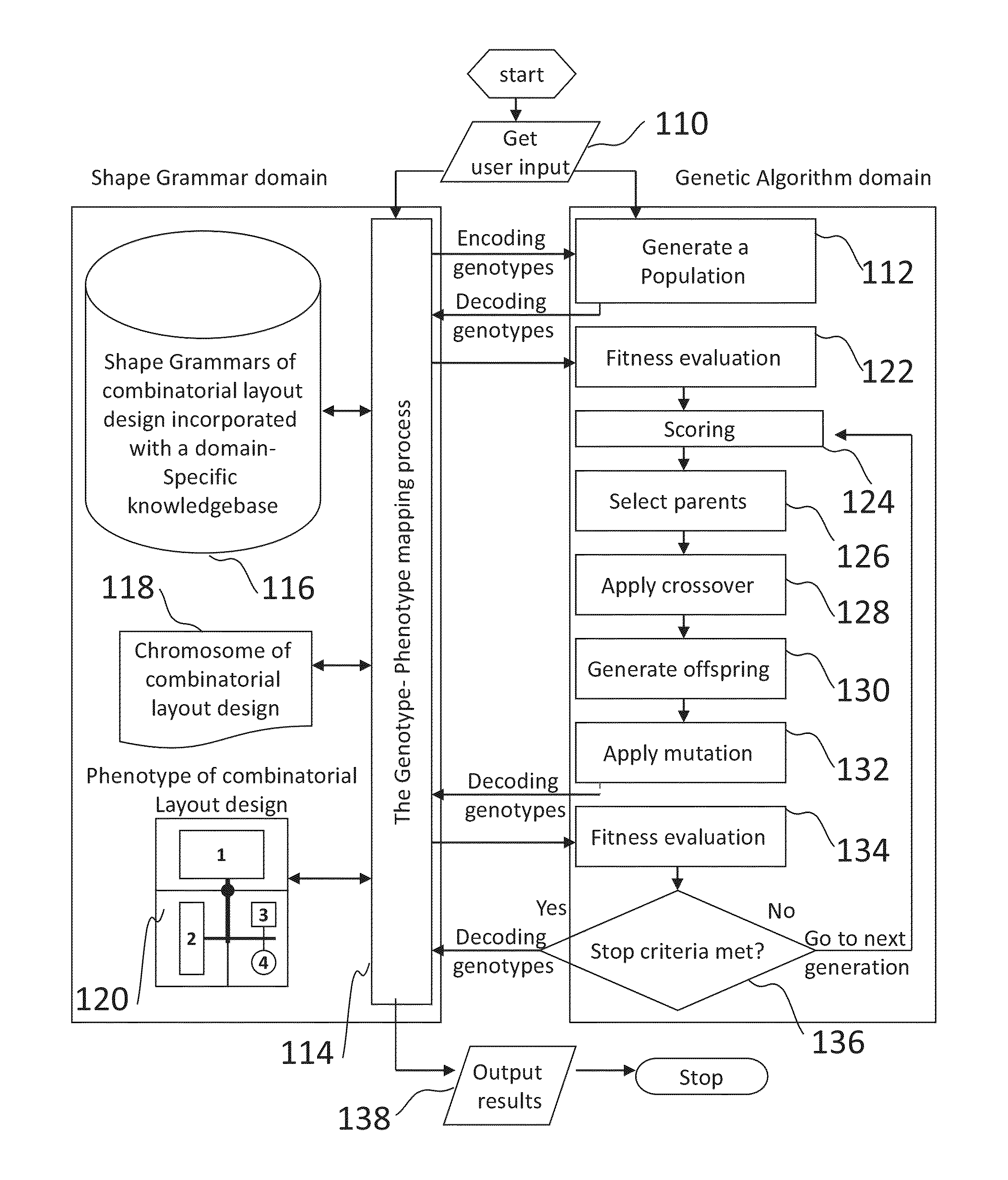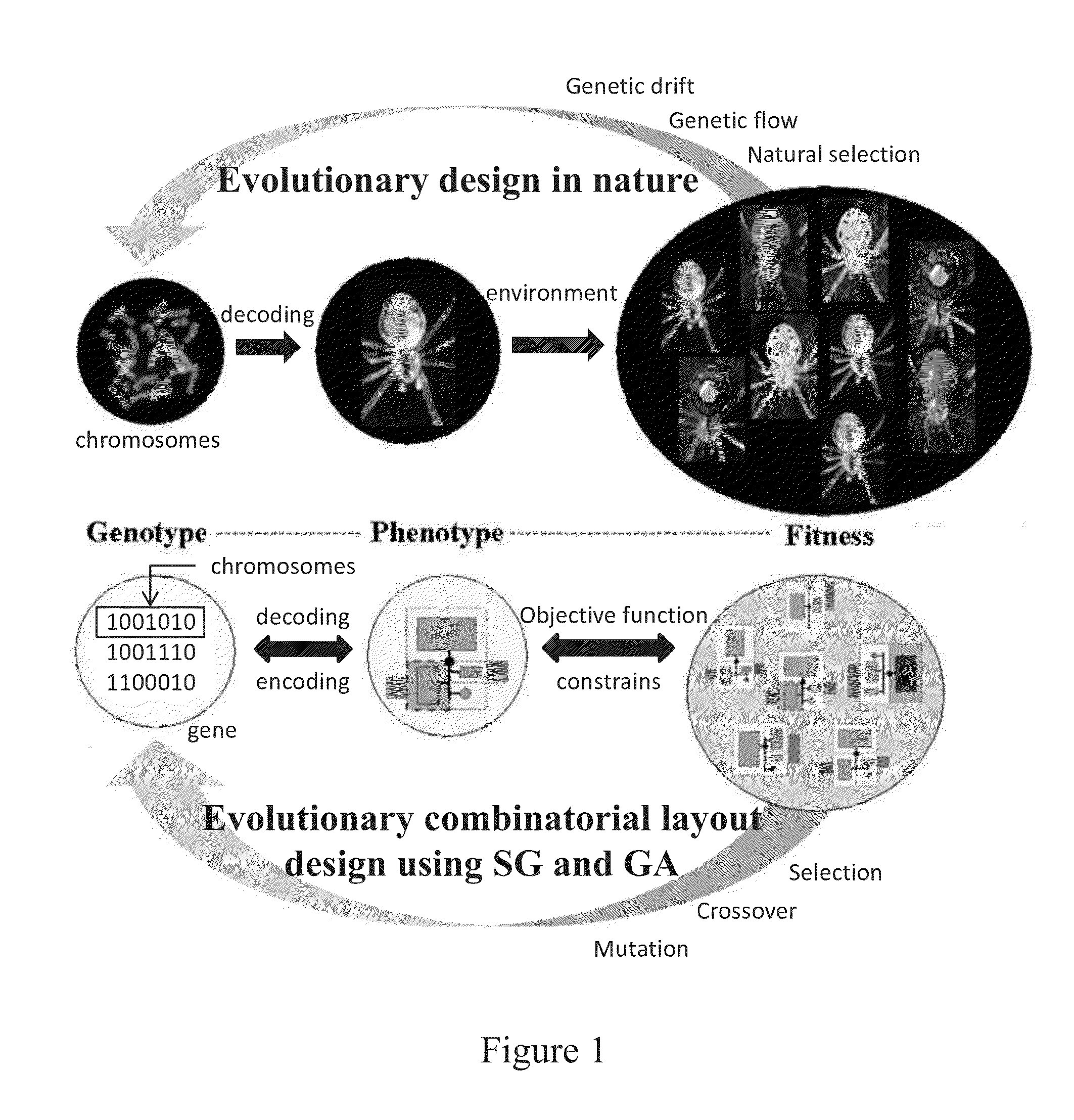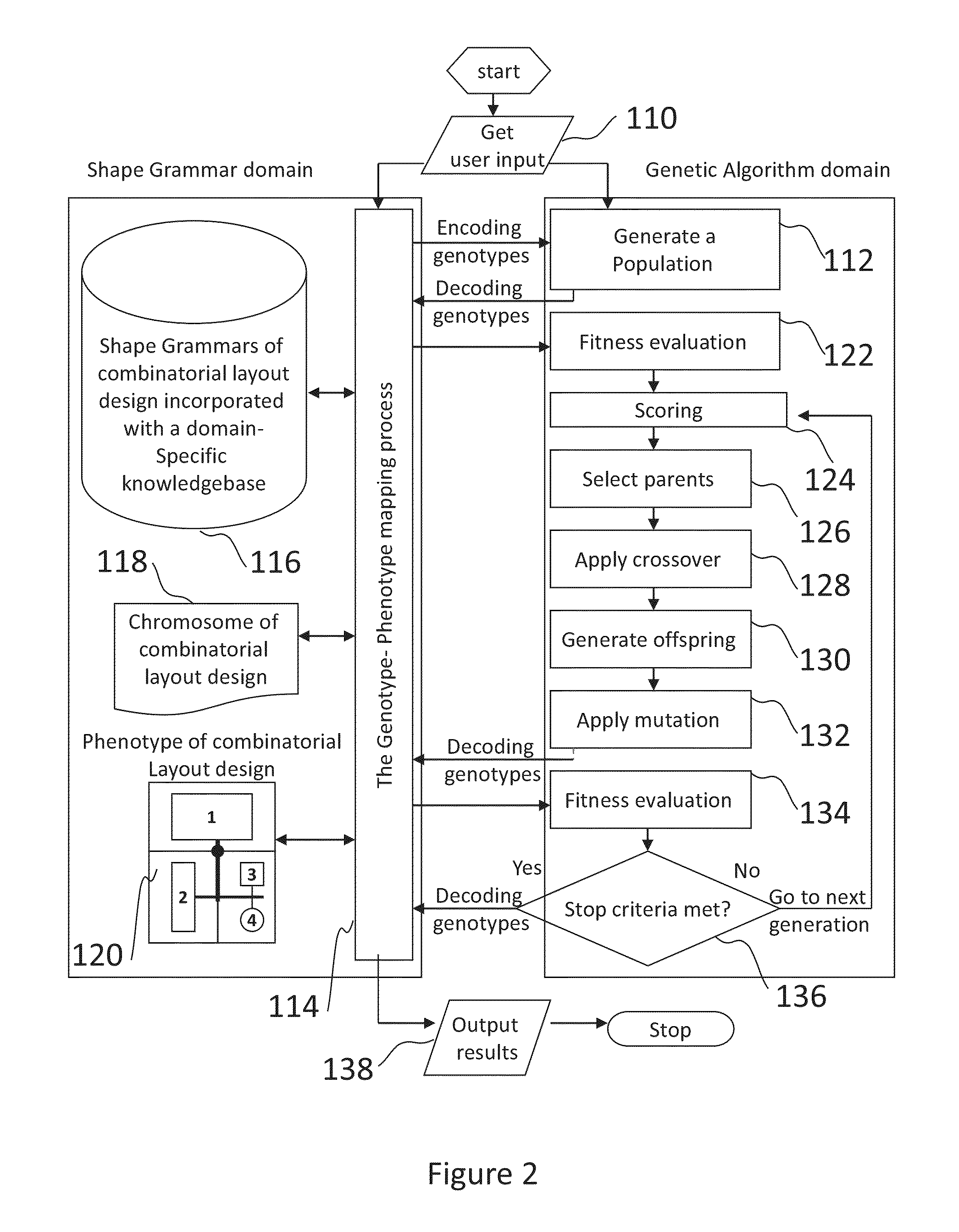Method and system for combinatorial layout design
a layout design and combinatorial technology, applied in multi-objective optimization, genetic algorithms, instruments, etc., to achieve the effect of improving the total quality of design of production family moulds, reducing the total design lead time, and optimizing design
- Summary
- Abstract
- Description
- Claims
- Application Information
AI Technical Summary
Benefits of technology
Problems solved by technology
Method used
Image
Examples
Embodiment Construction
[0076]As used herein and in the claims, “comprising” means including the following elements but not excluding others.
[0077]The present invention discloses a novel approach for combinatorial layout design, which involves allocating a set of space elements on a layout base, performing topological and geometrical grouping on them so as to satisfy certain user-specified design objectives and constraints. The Genetic Algorithm (GA) is adopted to explore and search a large feasible solution space, and through its stochastic evolutionary search process generates a set of creative design alternatives that yield an optimal population of valid layout solutions. A multi-session chromosome design is disclosed to encode the entire layout configuration and a corresponding Genotype-Phenotype mapping algorithm is used to decode the layout information in the chromosome and transform it to a physical layout. Special cross-over and mutation operators are also developed to operate on this multi-session...
PUM
 Login to View More
Login to View More Abstract
Description
Claims
Application Information
 Login to View More
Login to View More - R&D
- Intellectual Property
- Life Sciences
- Materials
- Tech Scout
- Unparalleled Data Quality
- Higher Quality Content
- 60% Fewer Hallucinations
Browse by: Latest US Patents, China's latest patents, Technical Efficacy Thesaurus, Application Domain, Technology Topic, Popular Technical Reports.
© 2025 PatSnap. All rights reserved.Legal|Privacy policy|Modern Slavery Act Transparency Statement|Sitemap|About US| Contact US: help@patsnap.com



